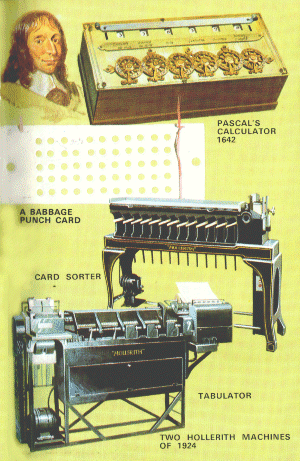
 |
How computers developed |
How computers developed |
|
|
|
 |
To think that computers have suddenly arrived on the scene would be wrong,
although it is true that their number and use have greatly increased during
recent years. Desk calculators have been in use for a very long time, and
even in the
days
of the old navigators and astronomers there was a need for some sort
of calculating instrument to relieve the human brain of work.
The first mechanical calculator was produced by Blaise Pascal in 1642. Others tried to improve on it but not until the nineteenth century was any real progress made. In l801 a Frenchman named Jacquard invented a punched card system for controfling the threads on his weaving looms. Charles Babbage followed in 1833 with his 'Analytical Engine', which could perform calculations automatically, using punched cards. This was the first digital computer (a machine that performs calculations with numbers). The American Hollerith system also used punched cards, but the calculating machinery was operated by electromagnetic means. It was introduced in 1889 and was generally used in a highly developed form right up to the widespread introduction of electronic computers in the 1950s. 1943 saw the need for computing artillery firing charts, and ENIAC (Electronic Numerical Integrator and Calculator) was born. EDSAC (Electronic Delay Storage Automatic Calculator) was first used at Cambridge University six years later. And so the modern electronic computer came into being. |
Reproduced from "How it Works" Ladybird Series